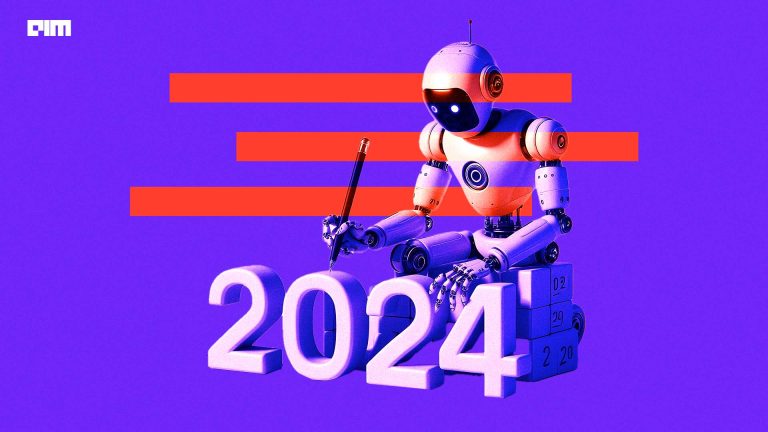The second floor of Boston Dynamics headquarters in Massachusetts brimmed with energy and wonder as two humanoid robotics ran up and downstairs, jumped on plywood panels and performed backflips. While the movements seemed perfect to the eyes of regular people, the robotics engineers at Boston Dynamics did not make a big deal for cracking the code. Instead, they got back to work to perfect the movements of the two humanoid robots — Atlas.
After months of working on it, the Hyundai-owned robotic company released the above video on Tuesday of Atlas performing the parkour routine to flaunt its developments. At the end of the routine, one of the two robots pumped its arm like a league-pitcher, a movement referred to as ‘Cha-Ching’ by the team. Although it looked perfect to the eyes of an ordinary man, the robotics engineers at Boston Dynamics were able to spot the error. The robot showed a slight stutter in its step. Scott Kuindersma, Atlas Team Lead, said, “If you watch the video closely, it looks a little awkward. We are going to swap in behaviour we have tested before, so we have some confidence it will work.”
But why do we need robots to perform backflips and run across the room?
History says
In 2013, Boston Dynamics unveiled Atlas for research. The objective was to push the limits of whole-body mobility in bots. Atlas was initially designed for search and rescue tasks. However, its advanced control system and hardware give the robot the balance and power to demonstrate human-level agility.
The 1.5-metre tall robot’s stack includes a custom battery, valves, and a compact mobile hydraulic system to power its 28 hydraulic joints. The control system enables diverse and agile locomotion. The algorithms allow it to reason through complex interactions that involve the whole body and environment to plan movements. As a result, Atlas moves with a speed of 1.5 meters per second. With a weight of 89 kgs, Atlas’ 3D printed parts provide it with the required strength-to-weight ratio necessary for leaps and somersaults.
Atlas’ three major components include:
- Behaviour libraries: templated motions are created with the help of trajectory optimisation and then combined into complex routines.
- Real-time perception: The humanoid uses depth sensors to generate point clouds of the surrounding environment and detect objects or hurdles.
- Model-predictive control: It uses robot dynamics models to predict the evolution of movement over time.
According to the robotics engineers, Atlas is less programmed and can adapt its behaviours based on what it sees in its environment.
Use Cases
Earlier this year, Boston Dynamics’ Spot made it to the headlines for appearing alongside the French soldiers during an army military exercise. But, for all the Atlas team’s efforts at Boston Dynamics, a robot’s backflip may never be useful in a real-life scenario. Atlas is meant for research. Unlike Spot, which is available for sale, Atlas is not meant for commercial use.
However, the ability of a robot to perform complex activities at par with an average human adult, and respond to its environment like people, opens up endless possibilities for the robotic industry.
Kuindersma explains that humanoids are the best platform to perform physical tasks. From a technical standpoint, humanoids present challenges that excite research teams. The cumulation of its size and complexity make it highly puzzling for researchers and engineers to figure the strength to weight ratio, runtime, physical aspects, and range of motion.
“Pushing the limits on a humanoid robot like Atlas drives hardware and software innovation that translates to all of our robots at Boston Dynamics,” said Kuindersma.
The parkour routine, usually focused on real-life-situations movements, is an excellent playground for researchers and engineers to experiment with new developments and behaviours. Parkour routines make the robots switch from one behaviour (movement) to another while maintaining balance.
Kuindersma added, “The work we’re doing now is allowing us to create a solid foundation for tackling the next set of research problems.”
Latest Developments
If one looks at videos of Atlas performing stunts over the last five years, one will not spot drastic developments. This is not the first time that Atlas performed backflips and handstands. However, the underlying technology and processes controlling these movements have been substantially upgraded.
For instance, earlier, videos of Atlas performing a gymnastic routine (released in 2019) or its New Year dance to ‘Do You Love Me?’ (released in 2020) performed along with Spot, were more programmed. In other words, the moves were chained together into routines that could be repeated. The robots then were not concerned about their environment.
However, researchers and robotic engineers have now upgraded Atlas to sense its environment and base its reactions on the surroundings. Engineers no longer need to pre-programme motions. Instead, they only create a couple of templates of behaviours to match the environment. Despite the upgrades, Atlas has only a 50 per cent success rate of the vault, and there are still chances of failure in every step that Atlas takes.
Kuindersma said he could not but help imagine a world, 20 years later, where robots work next to humans with “Grace, reliability” (to remove all doubts about questions related to robots taking over humans).
This experiment is, thus, only a small glimpse into the future and of what is possible then.
While Atlas is only meant for research purposes, robots around the world are actually coming to human rescue. Recently Amazon launched its Ernie and Bert to reduce recordable incident rates in warehouses. To know how Indian startup Good Little Robots is accelerating developments in the Indian robotics ecosystem, click here.


















































































